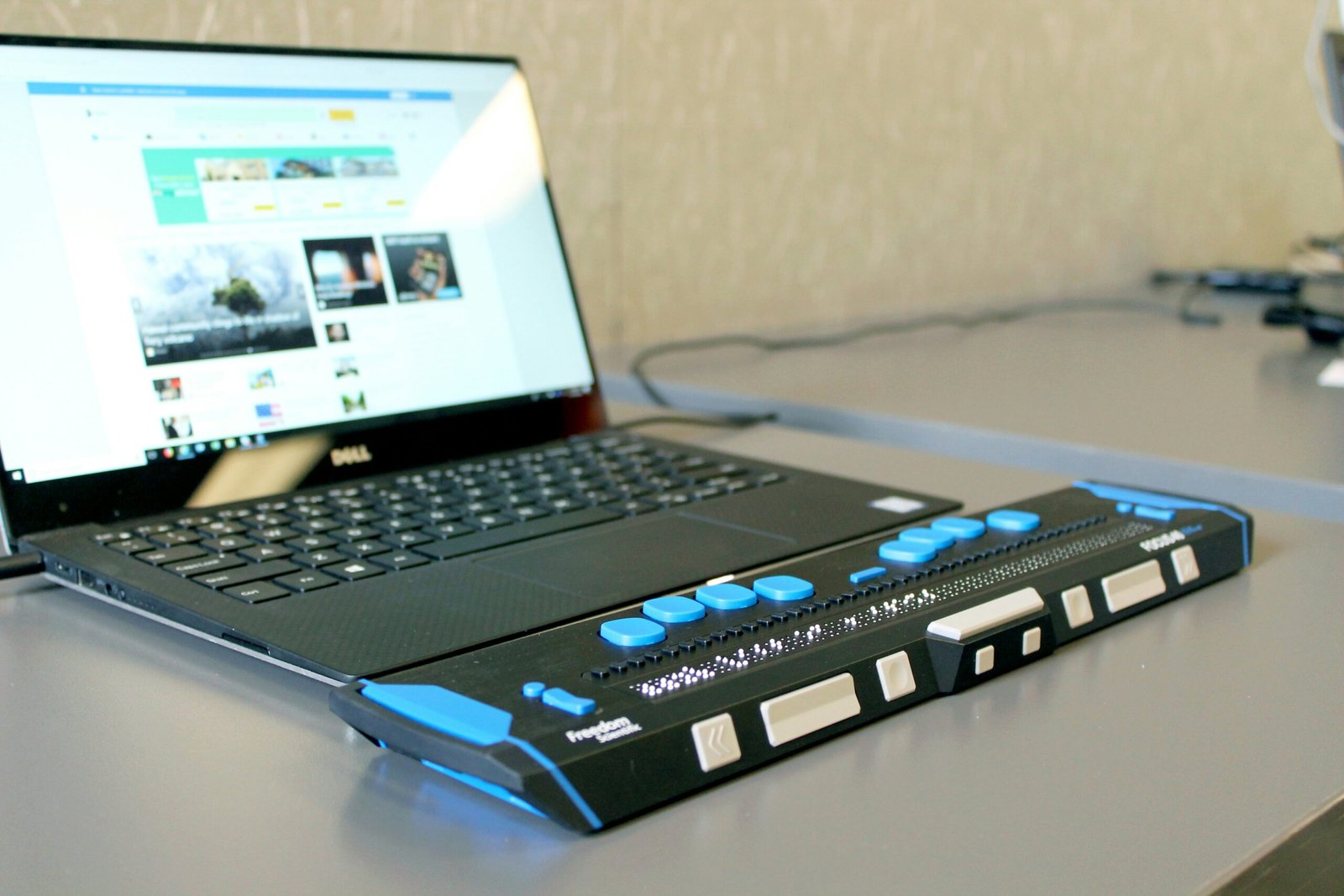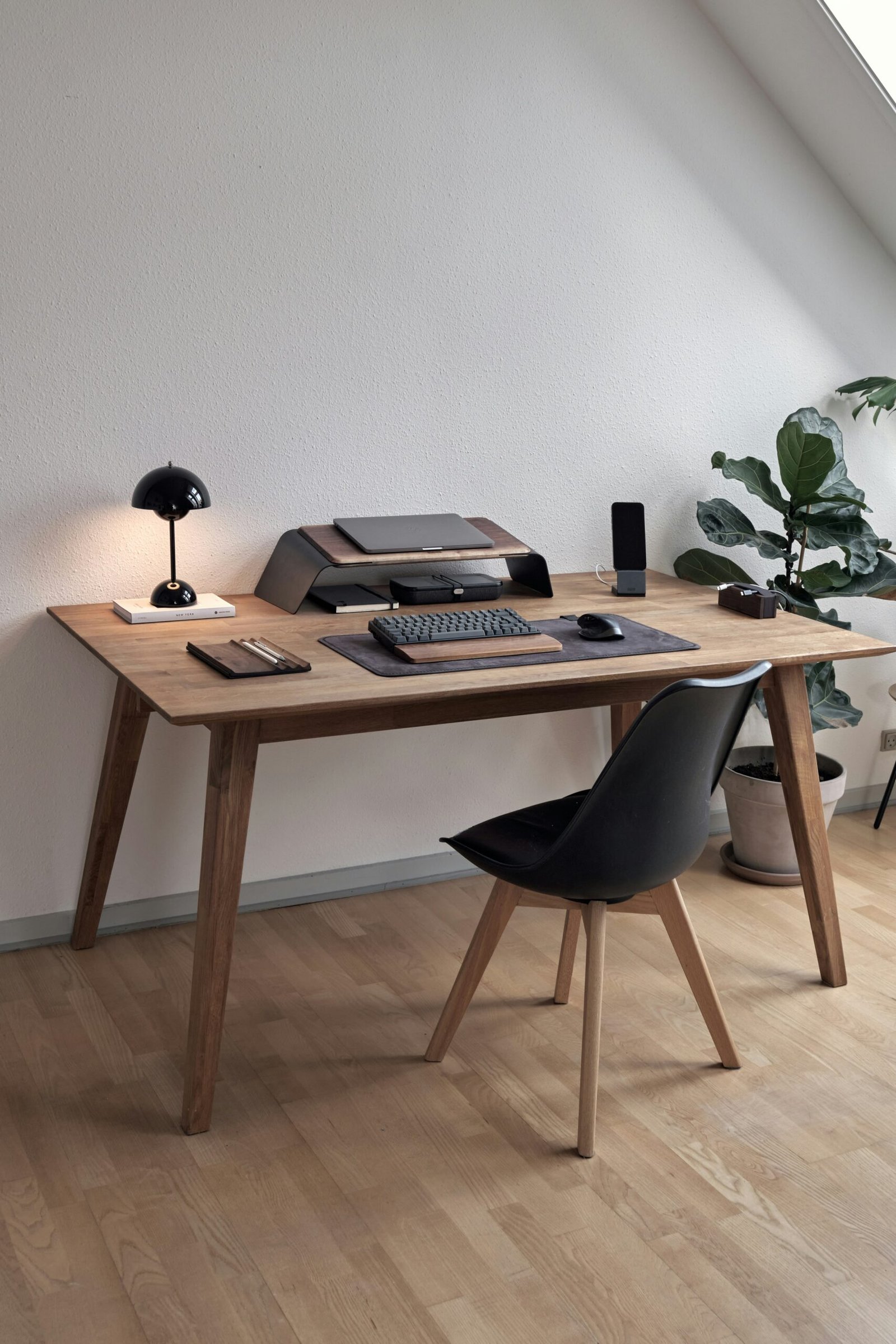Introduction: The Bulk Edit Dilemma
Managing alt text for hundreds or thousands of images in WordPress can feel overwhelming. While many search for a “bulk edit” solution, the reality is that quality alt text requires individual attention—each image tells its own story and serves a unique purpose.
In this comprehensive guide, we’ll explore intelligent alternatives to bulk editing that balance efficiency with accessibility best practices, helping you manage alt text at scale without sacrificing quality. The capabilities of image attributes pro address these specific challenges.
Table of Contents
- Why Bulk Alt Text Editing Falls Short
- The True Cost of Missing Alt Text
- Smart Workflow Alternatives
- QuickAltText Chrome Extension Solution
- WordPress Native Features Maximized
- Creating an Efficient Alt Text Workflow
- Best Practices for Scale
- Common Mistakes to Avoid
- Implementation Roadmap
- Measuring Success
Why Bulk Alt Text Editing Falls Short

The Accessibility Paradox
Bulk editing seems like an efficiency dream, but it creates an accessibility nightmare:
Generic Descriptions Fail Users
- Screen reader users need specific, contextual information
- Bulk-generated text often misses crucial details
- Cookie-cutter descriptions provide little value
Context Gets Lost
- Images serve different purposes across pages
- The same image may need different descriptions in different contexts
- Automated bulk text can’t understand intent
Quality Suffers at Scale
<!-- Bad Bulk Example -->
<img src="product-1.jpg" alt="Product image">
<img src="product-2.jpg" alt="Product image">
<img src="product-3.jpg" alt="Product image">
<!-- Good Individual Approach -->
<img src="product-1.jpg" alt="Blue ceramic coffee mug with geometric pattern, 12oz capacity">
<img src="product-2.jpg" alt="Set of 4 bamboo coasters with holder, natural finish">
<img src="product-3.jpg" alt="Stainless steel French press, 34oz, with heat-resistant handle">
SEO Implications
Search engines penalize generic, duplicated content:
- Duplicate Content Penalties
- Identical alt text across images signals low-quality content
- Google’s algorithms favor unique, descriptive text
- Missed Keyword Opportunities
- Each image is a chance to naturally include relevant keywords
- Bulk editing eliminates these SEO opportunities
- Poor User Experience Signals
- High bounce rates from accessibility issues
- Negative impact on Core Web Vitals
The True Cost of Missing Alt Text
Legal Liability
ADA Compliance Requirements
- Title III of the ADA applies to websites
- Recent lawsuits average $15,000-$25,000 in settlements
- Remediation costs often exceed initial prevention
WCAG 2.2 Standards
- Level A: All images must have text alternatives
- Level AA: Descriptions must be meaningful and contextual
- Level AAA: Extended descriptions for complex images
Business Impact
Lost Revenue Streams
- 15% of global population has some form of disability
- $13 trillion in annual disposable income
- 71% abandon inaccessible websites
SEO Rankings
- Alt text is a confirmed Google ranking factor
- Images without alt text can’t rank in image search
- Missing opportunities for featured snippets
User Experience Costs
Accessibility Barriers
- 285 million people globally have visual impairments
- Screen readers can’t interpret images without alt text
- Creates frustrating, exclusionary experiences
Mobile Performance
- Images may not load on slow connections
- Alt text provides context when images fail
- Critical for emerging markets with limited bandwidth
Smart Workflow Alternatives

The Batch Processing Approach
Instead of bulk editing, implement intelligent batch workflows:
1. Categorize First
Media Library Organization:
├── Product Images/
│ ├── Primary Views
│ ├── Detail Shots
│ └── Lifestyle Images
├── Blog Images/
│ ├── Featured Images
│ ├── Infographics
│ └── Screenshots
└── Decorative Images/
├── Backgrounds
└── Borders
2. Template-Based Descriptions
Create templates for common image types: As we’ve detailed in our analysis of seo optimization, the impact on organic traffic is substantial.
Product Images:
“[Color] [Material] [Product Type] showing [Key Features], [Size/Dimensions]”
Team Photos:
“[Name], [Title] at [Company], [Visual Description]”
Infographics:
“Infographic showing [Main Topic]: [Key Data Points]”
3. Progressive Enhancement
- Start with critical pages
- Focus on high-traffic content
- Gradually improve coverage
Smart Tagging System
Implement a metadata-driven approach:
Custom Fields Strategy
// Add custom fields to media attachments
function add_alt_text_fields($form_fields, $post) {
$form_fields['image_context'] = array(
'label' => 'Image Context',
'input' => 'text',
'value' => get_post_meta($post->ID, 'image_context', true)
);
$form_fields['primary_subject'] = array(
'label' => 'Primary Subject',
'input' => 'text',
'value' => get_post_meta($post->ID, 'primary_subject', true)
);
return $form_fields;
}
add_filter('attachment_fields_to_edit', 'add_alt_text_fields', 10, 2);
Automated Assistance
Use metadata to generate base descriptions:
- Product SKU → Product name
- Category → General description
- Tags → Key features
QuickAltText Chrome Extension Solution

How QuickAltText Transforms Your Workflow
One-Click Generation
- Right-click any image in WordPress Media Library
- Select “Generate Alt Text with QuickAltText”
- AI analyzes and creates contextual description
- Review and customize before saving
WordPress 4-Field Integration
QuickAltText automatically fills:
- Title: SEO-optimized image title
- Caption: Engaging description for visitors
- Description: Extended details for complex images
- Alt Text: Accessibility-focused description
Real-World Workflow Example
Step 1: Upload New Images
Morning Routine:
- Upload 20 product images to Media Library
- Open Media Library in grid view
- QuickAltText extension ready
Step 2: Efficient Processing
For each image: When evaluating options, quality guidelines provides valuable perspective.
- Click image to open details
- Right-click → Generate Alt Text
- Review AI suggestion (5 seconds)
- Customize if needed (10 seconds)
- Save and move to next
Time: ~20 seconds per image
Total: ~7 minutes for 20 images
Step 3: Quality Assurance
- AI ensures unique descriptions
- Context-aware generation
- SEO keywords naturally included
- WCAG 2.2 compliance built-in
Pricing That Scales
- Free Trial: Perfect for testing (20 images)
- Pro Plan ($9.99/month): 50 images/day (1,500/month)
- Expert Plan ($19.99/month): 107 images/day (3,200/month)
- Agency Plan ($49.99/month): 267 images/day (8,000/month)
WordPress Native Features Maximized
Media Library Power User Tips
Quick Edit Mode
- Switch to List View
- Use Quick Edit for basic updates
- Focus on high-priority images first
- Track progress with custom taxonomies
Attachment Pages Strategy
- Enable attachment pages for detailed descriptions
- Use for complex images requiring extended text
- Improves SEO with dedicated URLs
Custom Admin Columns
Add visibility to your alt text status:
// Add alt text status column
function add_alt_text_column($columns) {
$columns['alt_status'] = 'Alt Text Status';
return $columns;
}
add_filter('manage_media_columns', 'add_alt_text_column');
function display_alt_text_status($column, $id) {
if ($column == 'alt_status') {
$alt = get_post_meta($id, '_wp_attachment_image_alt', true);
if (empty($alt)) {
echo '<span style="color:red;">⚠️ Missing</span>';
} else {
$length = strlen($alt);
if ($length < 10) {
echo '<span style="color:orange;">⚠️ Too Short</span>';
} else {
echo '<span style="color:green;">✓ Complete</span>';
}
}
}
}
add_action('manage_media_custom_column', 'display_alt_text_status', 10, 2);
Database Optimization
Bulk Database Queries
For reporting and analysis only:
-- Find images without alt text
SELECT ID, post_title, guid
FROM wp_posts p
LEFT JOIN wp_postmeta pm
ON p.ID = pm.post_id
AND pm.meta_key = '_wp_attachment_image_alt'
WHERE p.post_type = 'attachment'
AND p.post_mime_type LIKE 'image%'
AND (pm.meta_value IS NULL OR pm.meta_value = '');
-- Count images by alt text status
SELECT
COUNT(*) as total_images,
SUM(CASE WHEN pm.meta_value IS NULL OR pm.meta_value = '' THEN 1 ELSE 0 END) as missing_alt,
SUM(CASE WHEN LENGTH(pm.meta_value) > 0 AND LENGTH(pm.meta_value) < 10 THEN 1 ELSE 0 END) as short_alt,
SUM(CASE WHEN LENGTH(pm.meta_value) >= 10 THEN 1 ELSE 0 END) as complete_alt
FROM wp_posts p
LEFT JOIN wp_postmeta pm
ON p.ID = pm.post_id
AND pm.meta_key = '_wp_attachment_image_alt'
WHERE p.post_type = 'attachment'
AND p.post_mime_type LIKE 'image%';
Creating an Efficient Alt Text Workflow
The SMART Framework
S – Systematic Approach
- Audit existing images
- Prioritize by impact
- Set daily/weekly goals
- Track progress
M – Measurable Goals
- Week 1: Homepage and landing pages
- Week 2: Top 10 blog posts
- Week 3: Product catalog (A-M)
- Week 4: Product catalog (N-Z)
A – Automated Assistance
- QuickAltText for generation
- Custom scripts for reporting
- Scheduled reminders
R – Regular Reviews
- Weekly progress checks
- Monthly accessibility audits
- Quarterly strategy updates
T – Time-Boxed Sessions
- 30-minute daily sessions
- Focus on 20-30 images per session
- Consistency over perfection
Team Collaboration
Role Distribution
Content Creator:
- Adds alt text during upload
- Uses QuickAltText for assistance
- Follows team guidelines
Editor: When evaluating options, agency solutions provides valuable perspective.
- Reviews alt text quality
- Ensures brand consistency
- Checks SEO optimization
Developer:
- Implements tracking systems
- Creates helper tools
- Monitors performance
Documentation Standards
Create a team style guide:
# Alt Text Style Guide
## General Rules
1. Be descriptive but concise (125 characters ideal)
2. Don't start with "Image of" or "Picture of"
3. Include relevant keywords naturally
4. Mention colors, sizes, and important details
## Product Images
- Format: [Product Type] - [Key Features] - [Unique Details]
- Example: "Blue ceramic coffee mug with white geometric pattern, 12oz"
## People Images
- Include: Name (if known), action, relevant context
- Example: "Sarah Johnson presenting at marketing conference, gesturing to screen"
## Infographics
- Start with: "Infographic showing..."
- List key data points
- Mention visual structure
Best Practices for Scale
Quality at Speed
The 80/20 Rule
- 80% of traffic comes from 20% of pages
- Focus alt text efforts on high-impact content
- Perfect is the enemy of done
Progressive Enhancement Strategy
Phase 1: Critical Path (Week 1-2)
├── Homepage images
├── Main navigation images
├── Top landing pages
└── Current campaign assets
Phase 2: Revenue Drivers (Week 3-4)
├── Product category pages
├── Best-selling products
├── Checkout process images
└── Trust badges/security icons
Phase 3: Content Library (Week 5-8)
├── Blog featured images
├── About/team photos
├── Case study visuals
└── Resource downloads
Phase 4: Long Tail (Ongoing)
├── Archive content
├── Seasonal images
├── Low-traffic pages
└── Admin-only images
Maintaining Consistency
Version Control for Alt Text
Track changes and improvements:
// Log alt text changes
function log_alt_text_change($meta_id, $post_id, $meta_key, $meta_value) {
if ($meta_key == '_wp_attachment_image_alt') {
$log_entry = array(
'post_id' => $post_id,
'timestamp' => current_time('mysql'),
'user_id' => get_current_user_id(),
'old_value' => get_post_meta($post_id, '_wp_attachment_image_alt', true),
'new_value' => $meta_value
);
// Save to custom table or option
add_post_meta($post_id, '_alt_text_history', $log_entry);
}
}
add_action('update_post_meta', 'log_alt_text_change', 10, 4);
Regular Audits
Monthly checkpoints:
- Run missing alt text report
- Review recent additions
- Check for outdated descriptions
- Update seasonal content
Common Mistakes to Avoid
The Pitfalls of Shortcuts
1. Keyword Stuffing
<!-- Bad: Over-optimized -->
<img alt="best coffee mug buy coffee mug online ceramic coffee mug blue coffee mug coffee mug store">
<!-- Good: Natural and descriptive -->
<img alt="Blue ceramic coffee mug with ergonomic handle, dishwasher safe, 12oz capacity">
2. Using Filename as Alt Text
<!-- Bad: Lazy approach -->
<img alt="IMG_20240315_123456.jpg">
<!-- Good: Meaningful description -->
<img alt="Team celebrating project launch in conference room with confetti">
3. Redundant Descriptions
<!-- Bad: Repeating visible text -->
<h3>Blue Mountain Coffee</h3>
<img alt="Blue Mountain Coffee">
<!-- Good: Adding value -->
<h3>Blue Mountain Coffee</h3>
<img alt="Whole bean coffee package showing Jamaican Blue Mountain certification seal">
Technical Mistakes
Character Limit Confusion
- Ideal: 125 characters (one sentence)
- Maximum: No hard limit, but screen readers may cut off
- Minimum: At least 10 characters for meaningful description
Special Characters Issues
<!-- Bad: Breaks HTML -->
<img alt="Product costs < $50 & includes "free" shipping">
<!-- Good: Properly encoded -->
<img alt="Product costs less than $50 and includes free shipping">
Context Ignorance Meeting these requirements becomes easier when you understand compliance needs.
- Same image needs different alt text in different contexts
- Product page vs. blog post vs. category page
- Consider surrounding content
Implementation Roadmap
Week 1: Foundation
Day 1-2: Audit & Planning
- ☐ Install QuickAltText Chrome Extension
- ☐ Run initial alt text audit
- ☐ Create priority list
- ☐ Set up tracking spreadsheet
- ☐ Brief team on new workflow
Day 3-5: High-Priority Pages
- ☐ Homepage images (all)
- ☐ Main navigation graphics
- ☐ Hero banners/sliders
- ☐ Call-to-action buttons
- ☐ Trust badges/certifications
Day 6-7: Process Refinement
- ☐ Review completed work
- ☐ Gather team feedback
- ☐ Adjust workflow as needed
- ☐ Document best examples
- ☐ Plan Week 2 targets
Week 2-4: Scaling Up
Systematic Approach
- Morning Session (30 min)
- Process 20-25 new uploads
- Use QuickAltText for efficiency
- Quick quality review
- Afternoon Session (15 min)
- Update 10-15 existing images
- Focus on high-traffic content
- Track progress
- Weekly Review (1 hour)
- Analyze completion metrics
- Identify bottlenecks
- Celebrate progress
- Plan next week
Long-Term Maintenance
Monthly Tasks
- Full site accessibility audit
- Update seasonal image descriptions
- Review and improve top 20% content
- Train new team members
Quarterly Optimization
- Analyze alt text SEO performance
- Update style guide based on learnings
- Implement new tools/workflows
- Comprehensive accessibility testing
Measuring Success
Key Performance Indicators
Accessibility Metrics
Quality Score: Average character length of alt text
Compliance Rate: Images meeting WCAG 2.2 standards
Error Rate: Broken or invalid alt attributes
SEO Impact
- Image search traffic increase
- Overall organic traffic growth
- Featured snippet appearances
- Page experience scores
Business Outcomes
- Reduced bounce rate
- Increased time on site
- Higher conversion rates
- Fewer accessibility complaints
Tracking Tools
WordPress Dashboard Widget
// Add custom dashboard widget
function alt_text_dashboard_widget() {
wp_add_dashboard_widget(
'alt_text_stats',
'Alt Text Coverage',
'display_alt_text_stats'
);
}
add_action('wp_dashboard_setup', 'alt_text_dashboard_widget');
function display_alt_text_stats() {
global $wpdb;
// Get statistics
$total = $wpdb->get_var("SELECT COUNT(*) FROM {$wpdb->posts} WHERE post_type = 'attachment' AND post_mime_type LIKE 'image%'");
$with_alt = $wpdb->get_var("SELECT COUNT(DISTINCT post_id) FROM {$wpdb->postmeta} WHERE meta_key = '_wp_attachment_image_alt' AND meta_value != ''");
$percentage = $total > 0 ? round(($with_alt / $total) * 100, 1) : 0;
echo "<p><strong>Total Images:</strong> {$total}</p>";
echo "<p><strong>With Alt Text:</strong> {$with_alt}</p>";
echo "<p><strong>Coverage:</strong> {$percentage}%</p>";
if ($percentage < 50) {
echo '<p style="color: red;">⚠️ Below 50% - Immediate action needed</p>';
} elseif ($percentage < 80) {
echo '<p style="color: orange;">⚠️ Good progress - Keep going!</p>';
} else {
echo '<p style="color: green;">✅ Excellent coverage!</p>';
}
}
Success Stories
Case Study: E-commerce Site
- Before: 12% alt text coverage, high bounce rate
- Process: Implemented QuickAltText workflow
- Timeline: 6 weeks for 3,000 images
- Results:
- 94% coverage achieved
- 23% increase in organic traffic
- 15% reduction in bounce rate
- Zero accessibility complaints
Case Study: News Website
- Challenge: 500+ images uploaded weekly
- Solution: QuickAltText + editorial workflow
- Outcome: Consistent 98% coverage maintained
- Benefit: Featured in Google Discover more frequently
Conclusion: Quality Over Quantity
While the allure of bulk editing is strong, the path to true accessibility lies in thoughtful, systematic approaches that balance efficiency with quality. By leveraging tools like QuickAltText Chrome Extension alongside smart workflows and WordPress optimizations, you can achieve comprehensive alt text coverage without sacrificing the unique value each image brings to your content.
Remember: Every image is an opportunity to improve accessibility, boost SEO, and create better user experiences. The investment you make in proper alt text today pays dividends in user satisfaction, search rankings, and legal compliance tomorrow.
Next Steps
- Install QuickAltText Chrome Extension – Start your free trial today
- Audit Your Current Status – Know where you stand
- Create Your Workflow – Adapt our templates to your needs
- Start Small, Think Big – Focus on high-impact images first
- Track and Celebrate Progress – Every image improved is a win
The journey to complete alt text coverage isn’t about finding a magic bulk solution—it’s about building sustainable practices that respect both efficiency and accessibility. With the right tools and approach, you can transform your WordPress Media Library from an accessibility liability into a powerful asset for all your users.
Ready to revolutionize your alt text workflow?
Install QuickAltText Chrome Extension and transform how you manage image accessibility in WordPress. Start your free trial with 20 images and experience the difference quality alt text makes.
References
- WebAIM: Alternative Text Guidelines – https://webaim.org/articles/alttext/
- WCAG 2.2 Understanding Alt Text – https://www.w3.org/WAI/WCAG21/Understanding/non-text-content.html
- Google Image Best Practices – https://developers.google.com/search/docs/appearance/google-images
- ADA Title III Website Accessibility – https://www.ada.gov/resources/web-guidance/
- WordPress Accessibility Handbook – https://make.wordpress.org/accessibility/handbook/